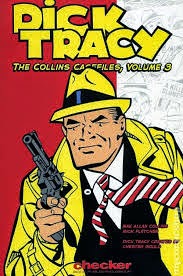There’s a family living on our block in a tiny home that’s dwarfed by the McMansions around it. The backyard – much of which is visible from the street - features a huge shady gum tree and a vegetable patch.
In this house lives a family whose lifestyle seems a little trapped in the
past. The parents have a nice hippie
vibe about them, and their two pre-schoolers are almost always playing in the
yard. By ‘playing’ I mean running,
skipping, ball games, and games of ‘pretend.’ Elsewhere in my neighbourhood, children do
exist but are rarely seen playing in their yards or driveways, let alone on a daily basis.
The appeal of these two children is how happy and friendly they are – and how
quietly they play. Their shout of
“Hello!” as I pass by on my daily walk, is as loud as they get. It takes me back to the 60s and 70s, when
children seemed capable of playing games that didn’t involve screeching. I’m not against noise per se, but against the
growing trend for screaming as an integral part of physical play. There are parents who'll argue it’s not
only normal for kids to scream a lot, but somehow necessary.
Make no mistake, I grew up in a regular suburb filled with regular young families, but it was understood that screams were a sign of genuine distress, not something you did for fun. The only game that elicited screams was Kiss Chasey, and under threat of Boy Germs or Girl Germs, screams were entirely justified.
Certainly we ramped the noise levels during games of ‘Cops and Robbers’ or
‘Cowboys and Indians’ but it still fell short of screamy. We’d shout warnings or instructions, but
screaming was seen as sissy – even for girls!
Am I wrong in thinking a lot of
screaming these days, is screaming for the sake of it? Or a form of expression or release, for kids
who haven’t been taught better ways? Make no mistake, I grew up in a regular suburb filled with regular young families, but it was understood that screams were a sign of genuine distress, not something you did for fun. The only game that elicited screams was Kiss Chasey, and under threat of Boy Germs or Girl Germs, screams were entirely justified.
This could easily spin into the much-discussed issue of children using toy weapons and pretending to kill, but I’m not going there. (But if you'd like to, I've provided a link below).
Suffice to say, the violence of childhood play in the 1960s and 70s was far tamer, more camp, than what you see today. And while the current generation of kids play these games and see being ‘killed’ as a dealbreaker (“What, everybody’s not a winner?”) we saw a performance opportunity for an elaborate death.
As for that “70s family” living nearby, my pastel fantasy is that the children have never touched an iPad, never used a laptop, rarely watch television. For all I know, beyond the charming leadlight front door of their modest home, rooms may be filled with screens and hi-tech gadgetry, but I get the feeling this is a family with a low-tier internet bundle.
Suffice to say, the violence of childhood play in the 1960s and 70s was far tamer, more camp, than what you see today. And while the current generation of kids play these games and see being ‘killed’ as a dealbreaker (“What, everybody’s not a winner?”) we saw a performance opportunity for an elaborate death.
As for that “70s family” living nearby, my pastel fantasy is that the children have never touched an iPad, never used a laptop, rarely watch television. For all I know, beyond the charming leadlight front door of their modest home, rooms may be filled with screens and hi-tech gadgetry, but I get the feeling this is a family with a low-tier internet bundle.
I
hope those children don’t change too much when they start school. Will their old-fashioned enjoyment of life be
appreciated or quashed? Will the other kids laugh at their gentle ways; create peer pressure to move
most of their play indoors?
When the inevitable happens, I hope they at least continue to use their imaginations, and perhaps convert some of their viewing, into outdoor play. After all, some of my finest memories of being 8 years old involve the enormous honour of the neighbourhood kids casting me as Dick Tracy (see, it wasn’t all gender stereotypes back then), and spying on the ‘baddies’ from my vantage point in the low branches of a willow tree, waiting for Joe Jitsu to contact me on my wristwatch radio.
“Six-two and even, over and out!”
When the inevitable happens, I hope they at least continue to use their imaginations, and perhaps convert some of their viewing, into outdoor play. After all, some of my finest memories of being 8 years old involve the enormous honour of the neighbourhood kids casting me as Dick Tracy (see, it wasn’t all gender stereotypes back then), and spying on the ‘baddies’ from my vantage point in the low branches of a willow tree, waiting for Joe Jitsu to contact me on my wristwatch radio.
“Six-two and even, over and out!”
Further reading:



